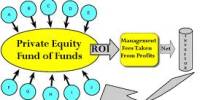Open Market Operations
This refers to the purchase or sale of securities in the market by the central bank on its own initiative to control the volume of credit in the country. It refers to a central bank buying or selling short-term Treasuries in the open market in order to influence the money supply, thus influencing short term interest rates. The Federal Reserve buys and sells government securities to control the money supply and interest rates. This activity is called open market operations.
Open market operations enable the Federal Reserve to affect the supply of reserve balances in the banking system and thereby influence short-term interest rates and reach other monetary policy targets. These are one of the three basic tools used by the Federal Reserve to reach its monetary policy objectives. The other tools are changing the terms and conditions for borrowing at the discount window and adjusting reserve requirement ratios.
Its open market operations are the tools it uses to reach that target rate by buying and selling securities in the open market. The central bank is able to increase the money supply and lower the market interest rate by purchasing securities using newly created money. Open market purchases increase the money supply, which makes money less valuable and reduces the interest rate in the money market. It can also be used to stabilize the prices of government securities, an aim that conflicts at times with the credit policies of the central bank.
When the central bank purchases securities on the open market, the effects will be –
(1) to increase the reserves of commercial banks, a basis on which they can expand their loans and investments;
(2) to increase the price of government securities, equivalent to reducing their interest rates; and
(3) to decrease interest rates generally, thus encouraging business investment. If the central bank should sell securities, the effects would be reversed.
















